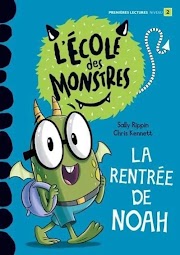Bright Ideas for Using Kahoot
Technology, 21st century teaching and learning, #edtech, engaging students by letting them use the device that seems almost parasitically attached to their hands... had enough yet?
Well, those who know me know that I *DO* in fact embrace incorporating technology in my program. They also probably know that it is a bit of a love/hate relationship and that I don't hesitate to share my frustrations with others in the hopes that we can truly improve and move beyond some of those issues, rather than taking a "Pollyanna" everything-is-sunshine-and-roses perspective.
This year, my virtual PLC has been all abuzz about Kahoot. My Bright Idea this month is based on getting the most "pedagogical bang" out of kids' enthusiasm for this fun, free tool.
Use Kahoot games to connect with previously taught content rather than picking a random topic for fun. This suggestion seems like a no-brainer, but my students have ALWAYS pushed for "just one more kahoot" because they really love playing, and they'll be fine with it being on any old topic, just for fun. Keep repeating to yourself "I am the teacher, I am the teacher." It's important that you actually use Kahoot as a pedagogical tool. What are you reviewing, introducing, or making sure they understood by playing it?
 If you find the music & excitement leads your students to do silly things like scream out or instinctively press a button without really even reading the answers, consider lengthening the possible response time. You can also turn OFF the music, which I did the one & only time I used Kahoot as an actual capital T "Test".
If you find the music & excitement leads your students to do silly things like scream out or instinctively press a button without really even reading the answers, consider lengthening the possible response time. You can also turn OFF the music, which I did the one & only time I used Kahoot as an actual capital T "Test".
You can also try just plain old classroom management & end the game if they aren't engaged in the learning as opposed to just the fun. They'll remember that and make better choices the next time they have the opportunity to play.
For a foreign language class, it's important that the Kahoot have NO ENGLISH. In order to justify spending time on something that is really just a glorified multiple choice quiz, it MUST be ALL target language on the screen (and ideally in discussing the right vs wrong answers and cheering one another on, but I'm probably dreaming here!)
Another tip is to try to focus on questions that require students to analyse or interpret something, and to apply their knowledge, rather than just being a straight up recall or comprehension question.
Kahoot autogrades, which is great. What I didn't know when I first started using it though is that if you don't download the results at the end of the Kahoot session, the results are lost. SO make sure to save results to Google Drive or to download the spreadsheet of responses. This appears after the chance students have to respond to how they felt about the kahoot. This screen I don't leave up for too long, but it's a necessary step to get through to save the results.
For more ideas to get you started in Kahoot, you can check out this blog post by Matt Miller of Ditch That Textbook. Here's a Kahoot that I made & played in my grade 8 French immersion Geography class (based on Strand A of the Ontario Curriculum) - feel free to play it in your class.
(Preview it to make sure you and I taught the same content similarly, so your students have a positive experience with it. If not, make yourself a copy and change whatever questions you need to first.)
For the love of all things warm and fuzzy, please DO NOT just use Kahoot in your classroom every Friday as a "reward" for decent behaviour the rest of the week. Yes, Core French teachers, I am speaking to you. It is a great tool, yes. But using it in a mindless, insignificant way only serves to further undermine the status of FSL. Please use it judiciously and keep the "treat factor" with some sound practices embedded. I promise that it won't ruin the fun!
I hope you liked this tip, and if so, be sure to follow me on Pinterest, Twitter and TpT for lots of other great stuff!

Well, those who know me know that I *DO* in fact embrace incorporating technology in my program. They also probably know that it is a bit of a love/hate relationship and that I don't hesitate to share my frustrations with others in the hopes that we can truly improve and move beyond some of those issues, rather than taking a "Pollyanna" everything-is-sunshine-and-roses perspective.
This year, my virtual PLC has been all abuzz about Kahoot. My Bright Idea this month is based on getting the most "pedagogical bang" out of kids' enthusiasm for this fun, free tool.
Use Kahoot games to connect with previously taught content rather than picking a random topic for fun. This suggestion seems like a no-brainer, but my students have ALWAYS pushed for "just one more kahoot" because they really love playing, and they'll be fine with it being on any old topic, just for fun. Keep repeating to yourself "I am the teacher, I am the teacher." It's important that you actually use Kahoot as a pedagogical tool. What are you reviewing, introducing, or making sure they understood by playing it?
 If you find the music & excitement leads your students to do silly things like scream out or instinctively press a button without really even reading the answers, consider lengthening the possible response time. You can also turn OFF the music, which I did the one & only time I used Kahoot as an actual capital T "Test".
If you find the music & excitement leads your students to do silly things like scream out or instinctively press a button without really even reading the answers, consider lengthening the possible response time. You can also turn OFF the music, which I did the one & only time I used Kahoot as an actual capital T "Test".You can also try just plain old classroom management & end the game if they aren't engaged in the learning as opposed to just the fun. They'll remember that and make better choices the next time they have the opportunity to play.
For a foreign language class, it's important that the Kahoot have NO ENGLISH. In order to justify spending time on something that is really just a glorified multiple choice quiz, it MUST be ALL target language on the screen (and ideally in discussing the right vs wrong answers and cheering one another on, but I'm probably dreaming here!)
Another tip is to try to focus on questions that require students to analyse or interpret something, and to apply their knowledge, rather than just being a straight up recall or comprehension question.
Kahoot autogrades, which is great. What I didn't know when I first started using it though is that if you don't download the results at the end of the Kahoot session, the results are lost. SO make sure to save results to Google Drive or to download the spreadsheet of responses. This appears after the chance students have to respond to how they felt about the kahoot. This screen I don't leave up for too long, but it's a necessary step to get through to save the results.
For more ideas to get you started in Kahoot, you can check out this blog post by Matt Miller of Ditch That Textbook. Here's a Kahoot that I made & played in my grade 8 French immersion Geography class (based on Strand A of the Ontario Curriculum) - feel free to play it in your class.
(Preview it to make sure you and I taught the same content similarly, so your students have a positive experience with it. If not, make yourself a copy and change whatever questions you need to first.)
For the love of all things warm and fuzzy, please DO NOT just use Kahoot in your classroom every Friday as a "reward" for decent behaviour the rest of the week. Yes, Core French teachers, I am speaking to you. It is a great tool, yes. But using it in a mindless, insignificant way only serves to further undermine the status of FSL. Please use it judiciously and keep the "treat factor" with some sound practices embedded. I promise that it won't ruin the fun!
I hope you liked this tip, and if so, be sure to follow me on Pinterest, Twitter and TpT for lots of other great stuff!










